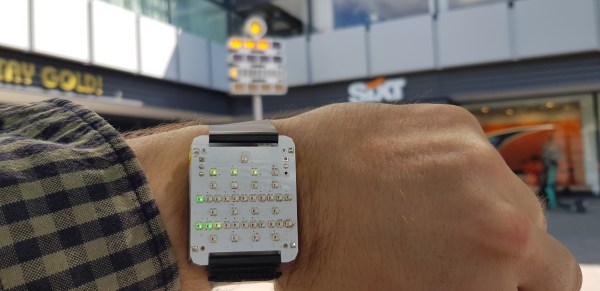If you’re a clock aficionado and have ever visited Berlin, you’re probably familiar with the Berlin Clock on Budapester Straße: a minimalist design of yellow and orange lights that displays the time in a base-5 number system. This clock has been telling the time to the few that can read it since 1975, and is but one of several unusual clocks that can be found in the city.
Berlin resident [jjoeff] decided to make a miniature replica, appropriately called the Berlin Uhr Nano, in order to watch the unusual display at any time of day. Built around a Wemos D1 Mini, it connects to WiFi in order to synchronize its internal clock to an NTP time server. It then drives a custom PCB that holds 39 WS2812 LEDs to display the time in its proper format. Unlike the original though, it also includes a full counter to tell the number of seconds; the bigger clock just flashes a single lamp to show the seconds passing.
Powered by a 500 mAh lithium battery, it can be converted into a wristwatch by simply threading a strap through slots in the PCB. With no buttons for adjustment or any functionality other than displaying the time, it serves the same purpose as the original, just in a portable format. We’ve seen a slightly larger Berlin Clock replica made of wood before, as well as a round one that uses the same base-5 encoding scheme. Continue reading “Tiny Berlin Clock Replica Also Counts Seconds”













